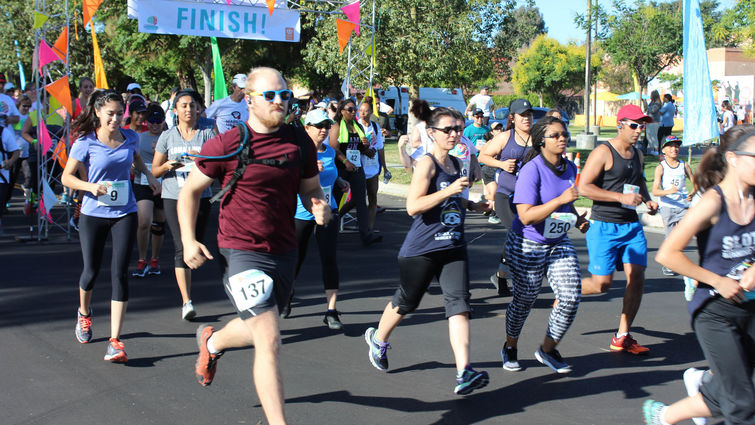
Running a 5K race or fun run can be both a rewarding and challenging experience. Whether it’s your first race or even the fifth, combining the right tools and plenty of preparation to successfully cross the finish line can be as easy as 1…2…3.
Daniel Reichert, MD, medical director of the Department of Family Medicine at Loma Linda University Health, has participated in numerous 5Ks, 10Ks, marathons, triathlons and even Half Ironman races. It’s safe to say Reichert has seen and done just about everything to stay on top of his race game.
Here are his eight tips to help get every runner to the finish line.
Sign up for a race
Probably one of the simplest ways to start a 5K is to sign up. It puts the runner on the hook, Reichert says. He encourages first-time runners to sign up at least 12 weeks in advance.
Establish a system of accountability
Consider racing with friends and family. It can be easier to hold each other accountable for maintaining a routine schedule, eating healthy and getting plenty of rest.
Make a commitment
Find what works best for any schedule. This includes training in the morning or training at night. The goal is to train for 30-40 mins four to five times a week. Reichert encourages first-time racers to start out walking for 30-minutes on a flat surface. Gradually, increase the walk to an incline and then eventually a run.
Start slow
Reichert advises that the goal of a first race is to finish. Eventually, finishing at a certain time will come as races continue to get longer. The first step is to finish, whether it’s walking, running or both.
Have the proper equipment
Every runner needs well-fitted running shoes. Reichert says every individual has different mechanics in their feet and strides that offer very different needs for shoes. If possible, buy shoes from stores that specialize in running shoes solely. These stores can look at how the feet move and run.
“The shoes make the difference,” says Reichert. “If you don’t get injured, that will keep you motivated.” Additionally, wear comfortable clothes that inspire and make the run easier.
Refer to online resources
Reichert encourages runners to refer to Hal Higdon’s website for additional training materials. Higdon provides training schedules for every race imaginable, including a 5K novice schedule for 12 weeks. It’s best to download the schedule and organize it in a calendar, Reichert says. This is another great tool to help stay accountable.
Race day
Get plenty of rest and lots, and lots of fluids the night before, Reichert says. Racers should arrive early to park, check-in and use the restroom. Reichert encourages racers to walk around, loosen up the muscles and calm the nerves. He doesn’t recommend a large breakfast, but a portion that works best for the racer.
Have fun
Reichert says the most challenging part of any race is the training. Once you start the race, all the nerves go away and the excitement sets in. When a racer approaches the finish line and hears the cheers of the crowd, “there’s nothing better,” Reichert says.
Ultimately, the best thing any runner can do is just do what feels natural to them. “Do what you trained to do,” Reichert says. Whether it’s running a 5K or going for a marathon, the excitement and thrill of training for that day will make anyone feel great.
